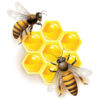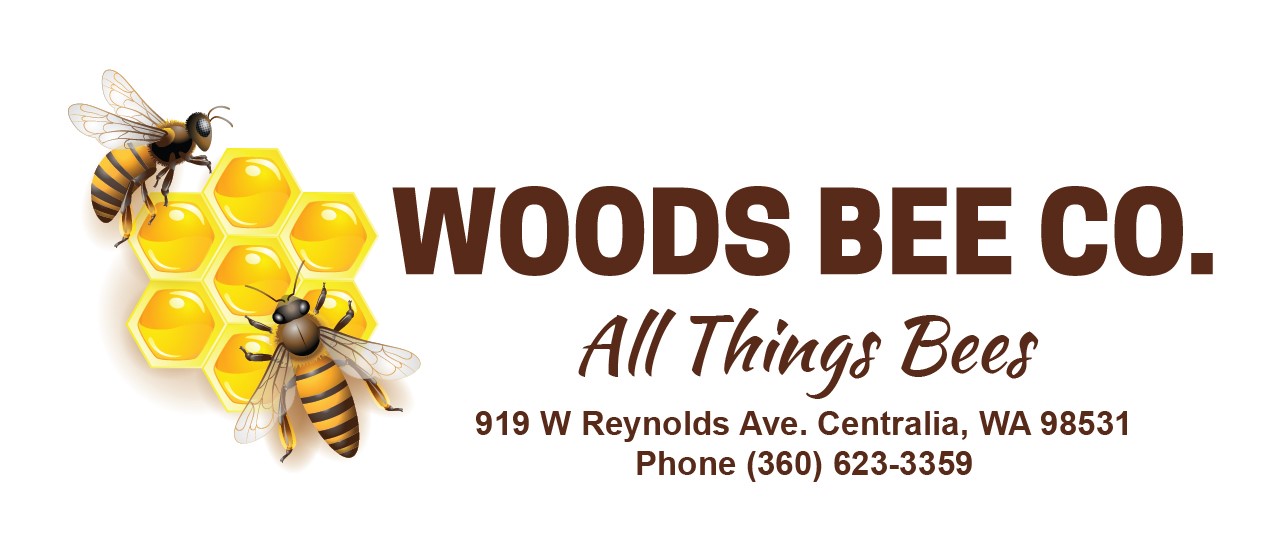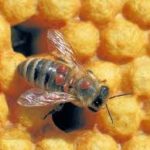Mites the Fourth Member of the Hive!!!
With the increasing number of the varroa mites on the rise, beekeepers will be forced to make a change in the way we keep bees. When I took my beekeeping class years ago, I learned that a beehive consisted of three members the worker bees, drones and a Queen. Now we must adjust our mindset to the realization of a fourth member of the hive, the varroa mites. With this understanding, beekeepers will un-doughtily have to change how we keep bees. No longer can we simply have bees, we are going to have to monitor the hive and its fourth member.
As beekeepers, we will have to take some drastic steps to ensure the safety and health of the bees in light of this development. However, with proper care and maintenance, we can keep health bees.
Below are five easy steps that can help assist in accomplishing this task.
First, we must accept the fact that this problem exist and it is not going away anytime soon, and while there may be natural remedies to tackle this problem doing nothing is no longer an option.
Next, we have to learn more about the fourth member of the hive (the varroa mites). For example, when are they at their strongest, their weakest, and how they affect the bees? We must also learn key phases like Parasitic Mite Syndrome (PMS) and Colony Collapse Disorder (CCD) and the symptoms.
Thirdly, we must setup up a maintenance plan that works and keeps the bees healthy. This plan includes monitoring and testing the mite count as well as keeping well documented notes, and tracking the results of the treatments. However, the most important part ofthis step is sharing your information.
The next step is to choose how you will treat, doing nothing is not an option. There are many different types of treatments available, and you must choose what is best first for the bees and secondly for you. First for the bees because there are so treatments out there that can cause serious health issue for the hive not to mention the Queen. Secondly, you must choose a treatment that you will follow through. The most critical part of this step is treating responsibly.
Moreover, finally, do something. If you think this process is going to be too overwhelming call us and we will find a home for your bees, please do not let them die this winter. There was an extremely high colony lose last winter that with a little more attention could have been lowered.
The Correctional Facility at JBLM had two hives last year and were successful getting both through the winter. This year they have increased the number of hive they have, and I believe that they will get all of them through the winter this year as well. We hear that there are acceptable losses in beekeeping, but we must stop thinking like this is the normal. What if you had two dogs and someone told you that you 40% was an acceptable rate of loss every year, would that be acceptable to you. No, you would watch your dogs closer, take them to the vet more often and feed them better food.
We will probably never eradicate the varroa mites, but we can take care of the bees.



Noe Aguiniga
Hello Alan, this year I purchased 3 hives, and they are healthy the most important thing is they did not had mites and to date they are mite free. I am planning on getting two more for next season. I like to know if you are getting bees from the same supplier as last year insuring mite free hives
Alan Woods
Yes we are using the same venders.
Noe Aguiniga
sharing some of my experience this past year.
This was a hard year for most beekeepers, myself I lost 6 out of 7 hives, after going thru the hive die outs there is no doubt that my losses where from poor mite control.
I used commercial mite strips from Hopgard II all seemed well until the temperature went up and for some reason 5 queens died in the span of 3 weeks of hot weather. Luckily I was able to replace them from a Split that had 7 Queens emerging at the same time. as I was walking be the Nuc. I could hear a screeching sound (pipping) and decided to look. The queens where making the sound even before coming out of their cups. I captured them all and put them on the orphan hives. In early August. the hives rebounded but I failed to treat again having my hives go thru winter with a lot of Mites. Two things happened 1.Hopgard in my own experience when temperature goes up kills Queens, 2. Me not treating for fear of killing the Queens left the door open for the Mites.
Alan Woods
We recommend to use oxalic acid and the vaporizer for mite treatment. It is an investment in your bees. Glad you were able to use your own resources and make your own queens. Knowing how this process works and being able to do that will help you increase your stock. Love to see you grow in your knowledge.